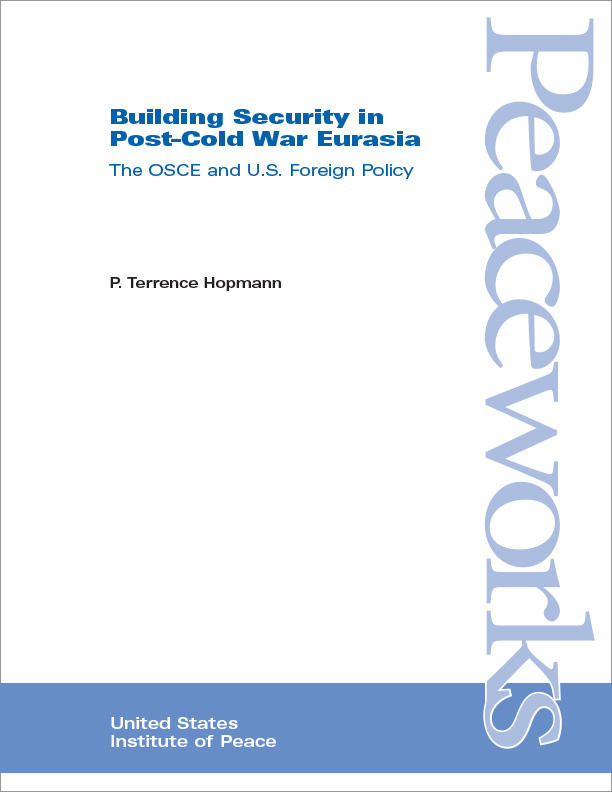Peaceworks No. 31
Before NATO forcefully halted Serbia's violence against ethnic Albanians in Kosovo, another European security organization was operating in the region—the Organization for Security and Cooperation in Europe (OSCE). In this report, Terry Hopmann elaborates on the conflict-management work of the organization and explores its possibilities as a complement to the United States' almost sole reliance on NATO as the principal instrument of U.S. foreign policy in trouble spots across Europe (especially in the Balkans) and into the former Soviet political space that constitutes Eurasia.

Before NATO forcefully halted Serbia's violence against ethnic Albanians in Kosovo, another European security organization was operating in the region—the Organization for Security and Cooperation in Europe (OSCE). Doubtless few in the United States and even in Europe knew about the OSCE, let alone its conflict-management functions in Kosovo—and in many other regions of conflict across the Eurasian continent. In this report, Terry Hopmann elaborates on the conflict-management work of the organization and explores its possibilities as a complement to the United States' almost sole reliance on NATO as the principal instrument of U.S. foreign policy in trouble spots across Europe (especially in the Balkans) and into the former Soviet political space that constitutes Eurasia.
P. Terrence Hopmann is professor of political science at Brown University and research director of the Program on Global Security at the Thomas J. Watson Jr. Institute for International Studies. During 1991–92, he was vice president of the International Studies Association. Until 1985, Hopmann was professor of political science at the University of Minnesota and director of the Harold Scott Quigley Center for International Studies.